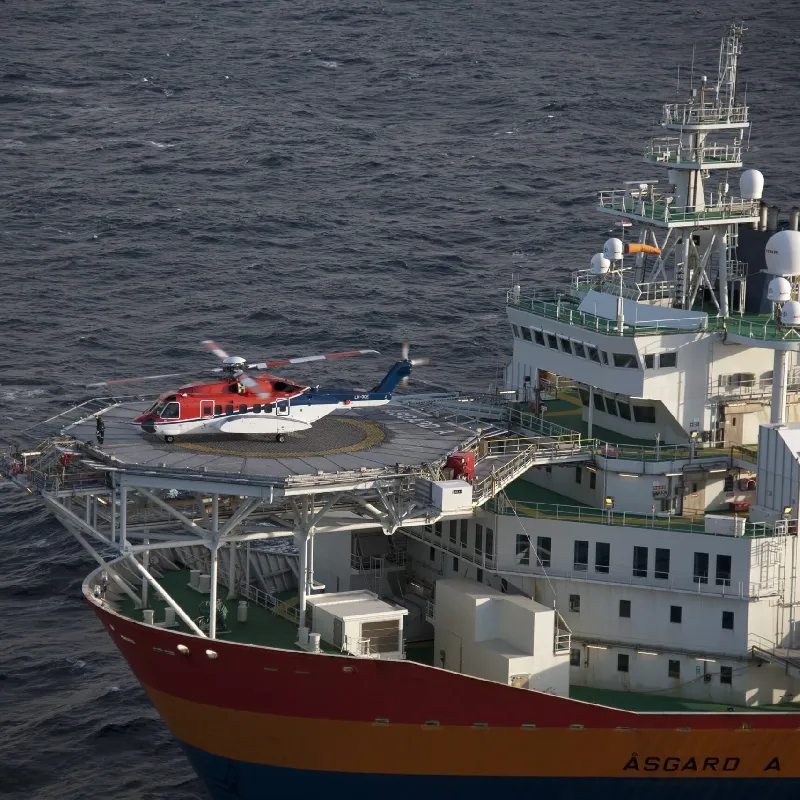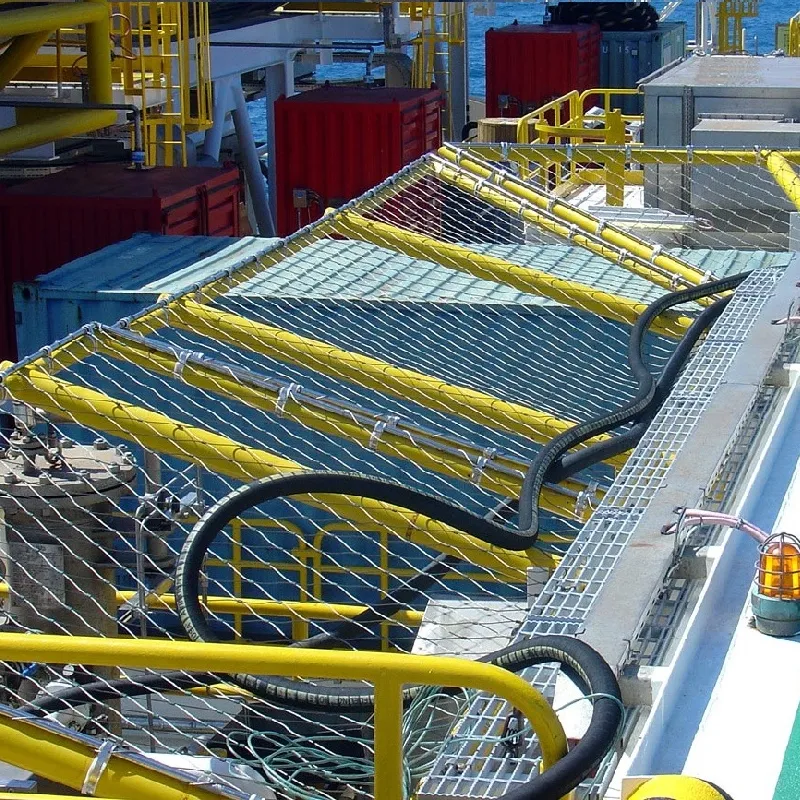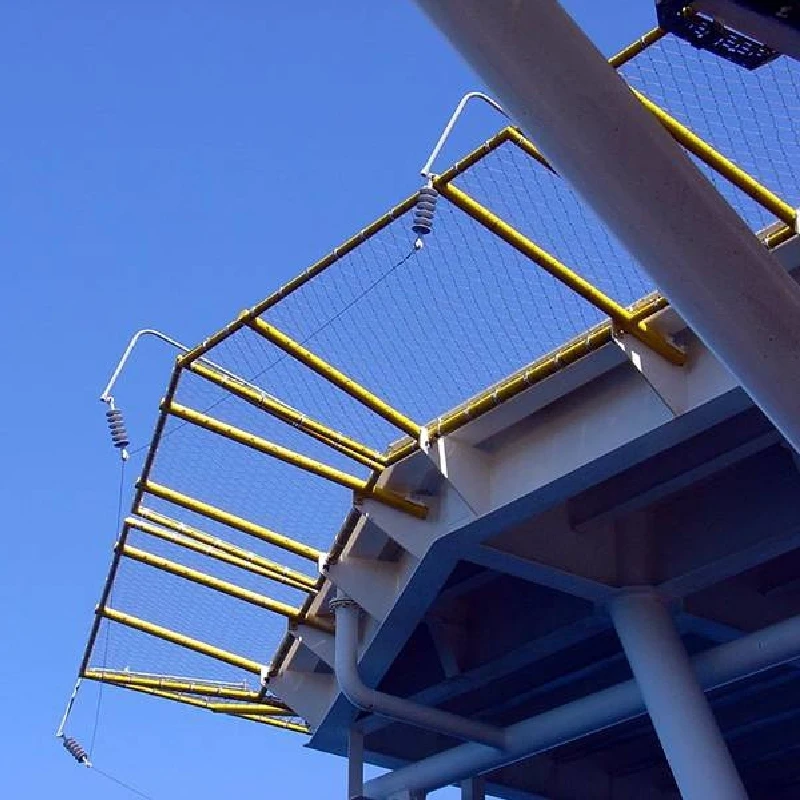- Industrial zone, South of Anping Town, Hengshui, Hebei, China.
- sales@hfpetromesh.com
- +86-18931809706
Helideck Perimeter Safety Nets: IMO-Certified, UV-Stable?
Helideck Perimeter Safety Nets: what really matters offshore (and on rooftops)
If you manage a helideck, you already know the fence isn’t decoration. It’s the last barrier between people, loose gear, and the sea (or a busy street below). I’ve walked more than a few decks where a gust came out of nowhere. That’s why I pay extra attention to helideck perimeter safety nets—the small details add up to real-world safety.

Industry pulse: lighter frames, tougher meshes, faster installs
Lately we’re seeing a shift toward 316L wire-rope meshes with ferrule systems, modular aluminum or duplex frames, and flame-retardant ropes for non-metallic components. Retrofitting is big—especially on older platforms updating to the latest CAP 437 guidance. Sustainability is creeping in, too: fewer galvanic couples, longer service life, smarter inspection regimes.
Product snapshot: Perimeter Safety Netting (origin: South of Anping Town, Hengshui, Hebei, China)
Perimeter Safety Netting surrounds the helideck to stop tools, wheel chocks, and—most importantly—people. HF Petro Mesh manufactures in the industrial zone south of Anping (a wire-mesh heartland), which, to be honest, shows in their customization depth.

Typical specifications (real-world use may vary)
| Mesh material | AISI 316L wire rope, 7×7 or 7×19; ferrule-clamped |
| Rope diameter | ≈3.0–4.0 mm (MBL ≈ 5.8–9.4 kN) |
| Frame/Posts | Marine-grade aluminum or 316L; hot-dip galvanized steel optional (ISO 1461) |
| Height above deck | ≈1.5 m typical; custom heights on request |
| Temperature range | −40 °C to +70 °C (rope/polymer parts rated accordingly) |
| Surface finish | Electropolished 316L; powder coat options for frames |
| Service life | 10–20 years offshore, with planned inspection |

Process flow: materials, methods, testing
- Materials: 316L rope mesh; electropolished ferrules; FR-rated lashing ropes; marine-grade frames.
- Manufacture: precision rope forming, ferrule swaging, post/wire pre-fit, frame welding (WPS/PQR), passivation.
- Testing: tensile pull to design load with 1.5× factor; salt-spray ISO 9227 (≥ 1,000 h, 316L no red rust); UV aging ISO 4892-2 (≈85% strength retention after 1,000 h); drop-bag test (internal method aligned with CAP 437 guidance: 50 kg @ 1 m, no tear, controlled deflection).
- Documentation: material certs (EN 10204 3.1), ISO 9001 QMS, traceability, installation manuals, inspection checklists.
Where they’re used (and why)
Offshore platforms and FPSOs, wind farm SOVs, superyachts, hospital helipads, and high-rise rooftop pads. Pilots like the clean sightlines; HSE teams like that helideck perimeter safety nets stop light equipment from going airborne and keep people safe during rotor wash or ship roll. Many customers say the lighter frames made their retrofits surprisingly painless.

Vendor comparison (quick take)
| Criteria | HF Petro Mesh | Vendor A | Vendor B |
|---|---|---|---|
| Standards | Aligns with CAP 437, ICAO Annex 14 Vol II | CAP 437 only | ICAO focused |
| Customization | High (mesh, height, frames, color) | Medium | Low |
| Lead time | ≈3–6 weeks | ≈6–10 weeks | ≈4–8 weeks |
| Corrosion strategy | 316L + electropolish; duplex optional | Galvanized steel | 316L mesh, steel posts |
| Certs | ISO 9001; material 3.1 certs | ISO 9001 | — |
Customization options
- Mesh aperture and rope diameter (balance weight vs. energy absorption)
- Frame type: hinged sections for access, integrated toe-boards, LED-ready edges
- Coatings and colors for visual contrast and corrosion zones
- Mounting: bolt-down plates, clamp-on for retrofits, isolation kits to avoid galvanic couples
Field notes (mini case studies)
North Sea FPSO: swap to helideck perimeter safety nets with 316L mesh cut deck weight by ≈18% and reduced annual touch-up painting to near-zero. Crew feedback: less rattle in Beaufort 7.
Southeast Asia hospital helipad: low-glare finish and bright contrast lacing improved edge visibility at dusk; the facilities team liked the quick modular install—one weekend, no fuss.
What to check before you buy
- Compliance: CAP 437 and ICAO Annex 14 Vol II alignment, plus class notes (ABS/DNV) where applicable.
- Test data: witnessed tensile and drop tests; UV and salt-spray reports.
- Installation method: retrofit-friendly brackets and isolation kits.
- Lifecycle: spares, inspection intervals, and documented service life.
Citations:
- UK CAA CAP 437: Standards for Offshore Helicopter Landing Areas.
- ICAO Annex 14, Volume II: Heliports.
- ABS Guide for Helicopter Landing Areas on Ships and Offshore Installations.
- ISO 1461 (Hot dip galvanized coatings), ISO 9227 (Salt spray), ISO 4892-2 (UV exposure).
-
Shaker Screen for Sale – Durable, API-Rated, Fast ShippingNewsNov.17,2025
-
Industrial Steel Grating — Durable, Anti-Slip, GalvanizedNewsNov.17,2025
-
Industrial Steel Grating: Durable, Anti-Slip, GalvanizedNewsNov.17,2025
-
Shale Shaker Screen – Durable Mesh, Factory Price, OEMNewsNov.17,2025
-
Shale Shaker Screen Factory | API Quality, OEM, Fast ShipNewsNov.17,2025
-
Metal Grating for Sale – In Stock, Custom Sizes, Quick ShipNewsNov.10,2025